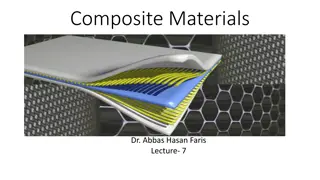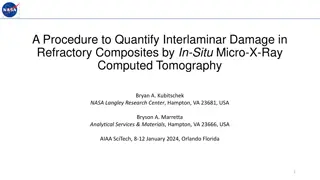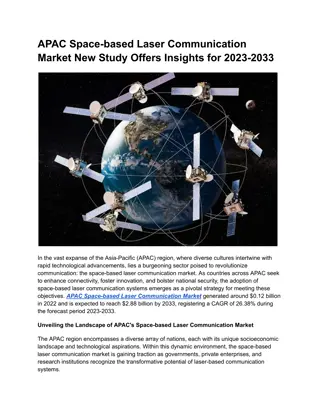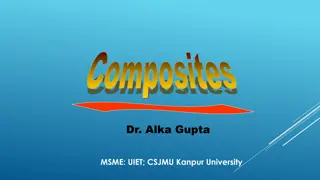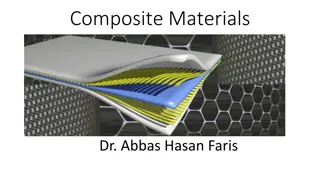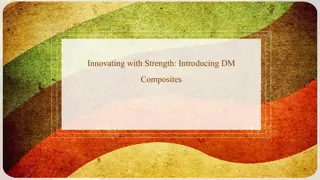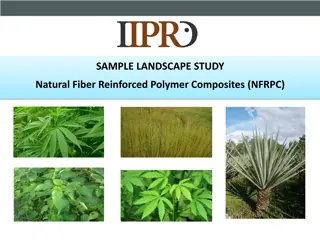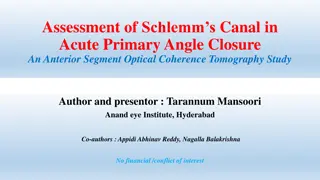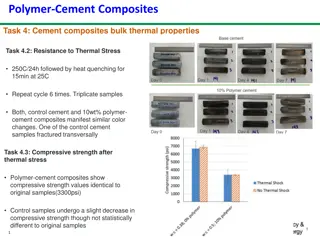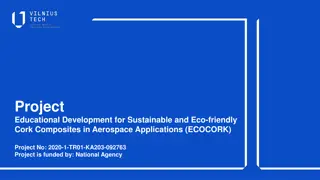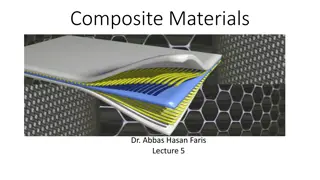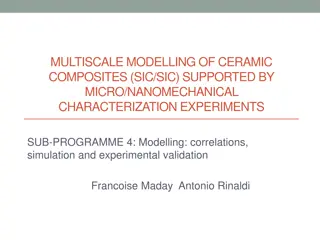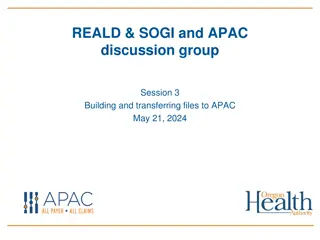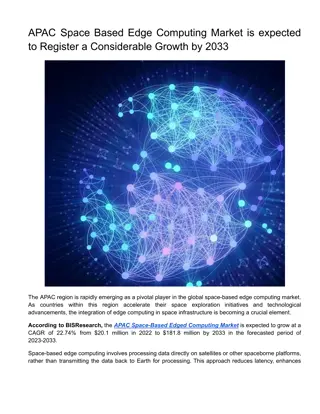
APAC Advanced Space Composites Market
The APAC Advanced Space Composites Market is expected to grow by CAGR of 12.38% from 0.26 billion in 2022 to 0.95 billion in the forecast period 2023-2033.nnRead Report Overview: //bisresearch.com/industry-report/asia-pacific-advanced-space-com
Download Presentation

Please find below an Image/Link to download the presentation.
The content on the website is provided AS IS for your information and personal use only. It may not be sold, licensed, or shared on other websites without obtaining consent from the author. If you encounter any issues during the download, it is possible that the publisher has removed the file from their server.
You are allowed to download the files provided on this website for personal or commercial use, subject to the condition that they are used lawfully. All files are the property of their respective owners.
The content on the website is provided AS IS for your information and personal use only. It may not be sold, licensed, or shared on other websites without obtaining consent from the author.
E N D
Presentation Transcript
APAC Advanced Space Composites Market Stats from 2023-2033 | BIS Research The APAC advanced space composites market is experiencing remarkable growth, driven by the increasing demand for lightweight, durable, and high-performance materials in the space industry. As countries in the Asia-Pacific region continue to expand their space exploration programs and invest in satellite technology, the need for advanced composites has become a critical component in the development of spacecraft, satellites, launch vehicles, and other space-related technologies. These materials offer significant advantages, including reduced weight, enhanced strength, and improved resistance to extreme conditions in space. According to BIS Research, the APAC Advanced Space Composites Market is expected to grow by CAGR: 12.38% from 0.26 billion in 2022 to 0.95 billion in the forecasted period of 2023-2033.
Key Drivers for the APAC Advanced Space Composites Market: 1. Demand for Lightweight Materials: The growing need for lightweight materials in the aerospace sector is a significant driver, as reducing weight is crucial for enhancing the performance and efficiency of spaceborne equipment. 2. Durability Requirements: There is an increasing demand for highly durable materials that can withstand the harsh conditions of space, which boosts the adoption of advanced space composites. 3. Improved Performance and Capabilities: Advanced space composites offer unique opportunities to enhance the effectiveness and operational capabilities of various space applications, making them indispensable for modern space missions. 4. Technological Advancements: Continuous manufacturing processes are fostering the development of new products that meet the rigorous demands of the space industry. 5. Expanding Space Applications: The rise in diverse space applications, including satellites and exploration missions, drives the need for advanced composites to support the structural integrity and functionality of spacecraft. innovations in composite materials and Launch Vehicles to Dominate as the Leading Platform Segment The platform segment of the advanced space composites market is dominated by the launch segment, holding a 40.25% share in 2023. The use of advanced composite materials in launch vehicles has led to significant improvements, providing key benefits such as weight reduction, higher payload capacity, better structural integrity, improved fuel efficiency, and enhanced overall performance. Manufacturers of launch vehicles are now prioritizing the design and development of smaller, simpler, reusable, and cost-effective models, driven by the growth in small satellites. However, with the surge in satellite launches in recent years and the anticipated small satellite mega constellations over the next decade, the satellite segment is expected to witness the fastest growth during the 2023-2033 forecast period. Request A Free Detailed Sample on APAC Advanced Space Composites Market! Carbon Fiber Segment to Lead the APAC Advanced Space Composites Market (by Material) In 2023, the material segment of the advanced space composites market is dominated by carbon fiber, holding a 31.1% share. Carbon fiber composites have been utilized in the space industry for many years and continue to be employed in a wide range of applications, such as launch vehicles, satellites, experimental systems, suborbital vehicles, and deep space probes. Recent advancements in carbon fiber manufacturing techniques have increased its flexibility, leading to the development of new carbon fiber varieties with enhanced modulus and strength, specifically designed for space system applications. Challenges in the APAC Advanced Space Composites Market 1. High Development Costs One of the primary challenges facing the APAC advanced space composites market is the high cost of developing and manufacturing these materials. Advanced
composites require specialized production processes and high-quality raw materials, which can drive up costs. For smaller companies and emerging players, this can pose a significant barrier to entry. 2. Technical Limitations While advanced composites offer numerous benefits, there are still technical limitations that need to be addressed. Issues such as long production times, complex manufacturing techniques, and the need for rigorous testing can hinder the widespread adoption of these materials in space applications. Overcoming these limitations will be critical for the continued growth of the APAC advanced space composites market. 3. Regulatory Hurdles The aerospace industry is heavily regulated, and space missions require stringent approval processes. Navigating the complex regulatory environment in the APAC region can be challenging for companies developing advanced composite materials. Compliance with international standards and ensuring the safety and reliability of these materials is essential for market success. Future Outlook and Growth Opportunities The APAC advanced space composites market is expected to see robust growth in the coming years, driven by several key factors: Expansion of Space Programs: As countries in the APAC region continue to expand their space exploration efforts, the demand for advanced composites will rise. With plans for more satellite launches, lunar missions, and even manned space exploration, the market for high-performance materials is set to grow. Increasing Investment in R&D: Investments in research and development (R&D) are crucial to advancing the capabilities of composite materials. Continued innovation in material science will lead to the development of new composite technologies that offer even greater performance in space applications. Emergence of Private Space Companies: The rise of private space companies in the APAC region presents significant growth opportunities for the advanced space composites market. These companies are driving demand for cost-effective, lightweight materials that can enhance the efficiency of satellite launches and space missions. Sustainability and Green Composites: As the space industry focuses more on sustainability, there is a growing interest in developing environmentally friendly composite materials. Green composites made from renewable resources or recyclable materials could play a key role in the future of space exploration, offering sustainable solutions for spacecraft and satellite manufacturing. Download Our ToC: Click Here! Conclusion The APAC advanced space composites market is positioned for strong growth, fueled by the region's expanding space programs, increasing demand for satellites, and technological advancements in composite materials. Despite challenges such as high development costs and regulatory hurdles, the market presents significant opportunities for companies that can innovate and meet the evolving needs of the space industry. With continued investment in R&D and the emergence of private space
companies, the APAC region is set to become a major player in the global space composites market, driving the next generation of materials for space exploration and beyond.

